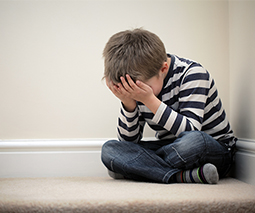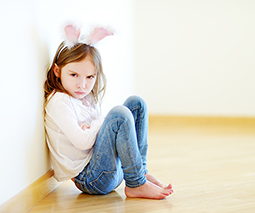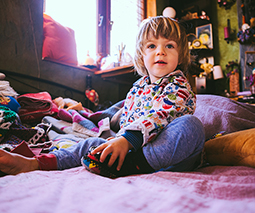How to stop your child’s whining: 7 positive ways to respond

Parenting has many challenges – and dealing with a whiny child is certainly one of them. There is nothing more frustrating than having to listen to a baby or toddler whine incessantly until they get what they want. It’s understandable that most parents are quick to lose patience.
But there’s a lot more to whining than meets our tired ears. Once you delve into the reasons why kids whine, then it’s easier to find the most effective way to respond, hopefully with compassion rather than frustration.
Why do kids whine and complain?
There are many reasons why kids whine – and it’s not just about trying to irritate parents until they get the treat they’re after. One thing is for sure – whining is extremely effective.
Research shows that whining is one of the most distracting sounds on the planet, more so than the screeches of a table saw catching repeatedly on a piece of wood. However, the reasons why kids raise the stakes to whining can vary enormously.
They need help coping
Kids tend to whine to let you know that something is physically wrong. Maybe they are tired, hungry or thirsty, maybe the trip the supermarket has just been too much for them at the end of the day. Dr Jessica Michaelson wrote for the Huff Post that a child will whine as he can no longer keep it together and needs your help.
“When they’re tired, hungry, or overstimulated they may whine to let us know, ‘I can’t act big anymore, please take care of me like I was a baby,'” she says.
They need more connection from their parents
Children may also whine because they’re craving more connection or positivity from their parents. Educator and developmental psychologist, Becky Bailey believes that a child might be desperate for a little more one-on-one time with mum or dad.
“Ask yourself, ‘Have I been busier than usual? Has my child’s routine changed? Has a sibling required more attention for some reason?'” she says. “Often, whining is a signal it’s time to reconnect with your child.”
Research also shows that kids actually whine more when the home environment is negative or in conflict. The study found that “parents’ negative emotionality was a relatively robust predictor of child problem behaviours.”

They’re trying to express other feelings
According to another study, whining might also be a result of your child wanting to express emotions such as sadness or anger. He might be feeling very strongly about something and need understanding and support rather than being told off or criticised for whining.
You gave in last time
If you have given in before, this is enough to encourage your child to continue the behaviour as it is been proved to work in the past. It demonstrates to your child that he will get what he wants, as long as he keeps going.
7 ways to respond to your child’s whining
It’s so easy to react in an angry way to whining and it’s hard to be patient when you’re at the end of your tether. However, a whining child is often at the end of their tether for many reasons and there are ways to respond more positively and even pre-empt the behaviour in the first place.
1. Look at what’s going on
If your child is whining, maybe have a look at what’s going on for him. Is he exhausted? Has it been a huge day and he’s not coping? If your child is needing some sort of resource from you then this could be the cause of the whining and therefore easily resolved, and can possibly be avoided the next time.

2. Take some quality time
Perhaps have a look at your home environment and also at your own stress levels. Make sure you’ve been having some special one-on-one time with your child, such as reading a story, playing a game or simply having a cuddle. “A few minutes connecting with your child once or twice a day can make a huge difference for families dealing with difficult behaviours,” says Becky.
3. Offer support
We all know what it’s like to feel emotional and need a good hug or even a good cry, but sometimes kids don’t really understand what emotions they are feeling. Early childhood educator, Janet Lansbury recommends supporting kids and their emotions rather than scolding them and telling them off. “The more we welcome our children’s displeasure, the happier everyone in our household will be,” she says.
4. React positively to your child
Research by Dr John Gottman, co-founder of the Gottman Institute has shown that when a child makes a bid, which is an attempt to get affection, acceptance or attention, then a parent should react positively and “turn towards” the child. So, if a child asks to play a game with you, a positive response would be to agree immediately or make a time when this can definitely happen.
A bid from a child might also be negative such as whining or a tantrum, but the desire for attention or acceptance is the same. Dr Gottman says that every time you respond positively, you’re making a deposit in your child’s emotional bank account. And by building that bank account, no matter how your child has made the bid, you’re strengthening the connection between you and your child – and then the less likely your child will be to whine.
5. Model good behaviour
If there is nothing physically wrong with your child and he is simply wanting something, stay calm and try to model a more positive way that he could ask. Guy Winch, a psychologist and author, believes consistency is the key when encouraging toddlers to change the tone of their voice and the way they ask for something.
He suggests the following response: “I’m sorry but your voice is whiny and my ears don’t work well when you whine. So please say that again in your big boy/girl voice.”
Becky says to respond with I statements and also model the way you want your child to speak. “Say something like, ‘I don’t like it when you whine. If you want a glass of milk, say it like this. Then model the exact words and tone you want the child to use.”

6. Don’t give in
Try not to give in just to make peace. This may stop the whining momentarily but in the long term, it will only reinforce the success that whining brings. There’s nothing wrong with giving your child a treat every now again but not as a result of kicking up a fuss about it.
7. Keep Calm
Easier said than done – but remaining calm and positive is one of the best things you can do. When trying to model better behaviour, Guy says that staying calm will have better results.
“The calmer and less emotional you are when you respond, the easier it will be for your child to focus on the message,” he says. “Otherwise, if they see their whining is getting a ‘reaction’ it will reinforce the bad habit.”









